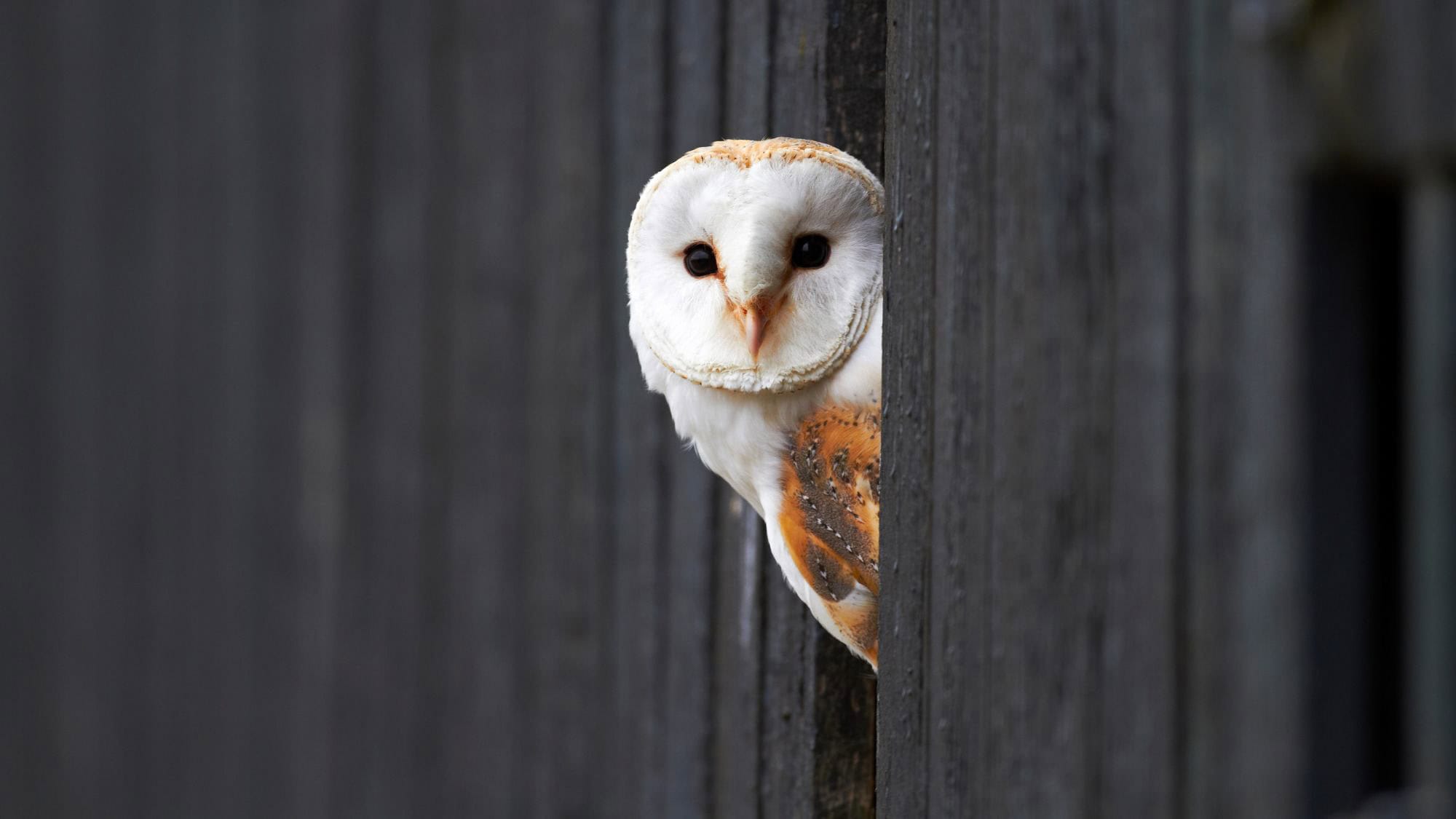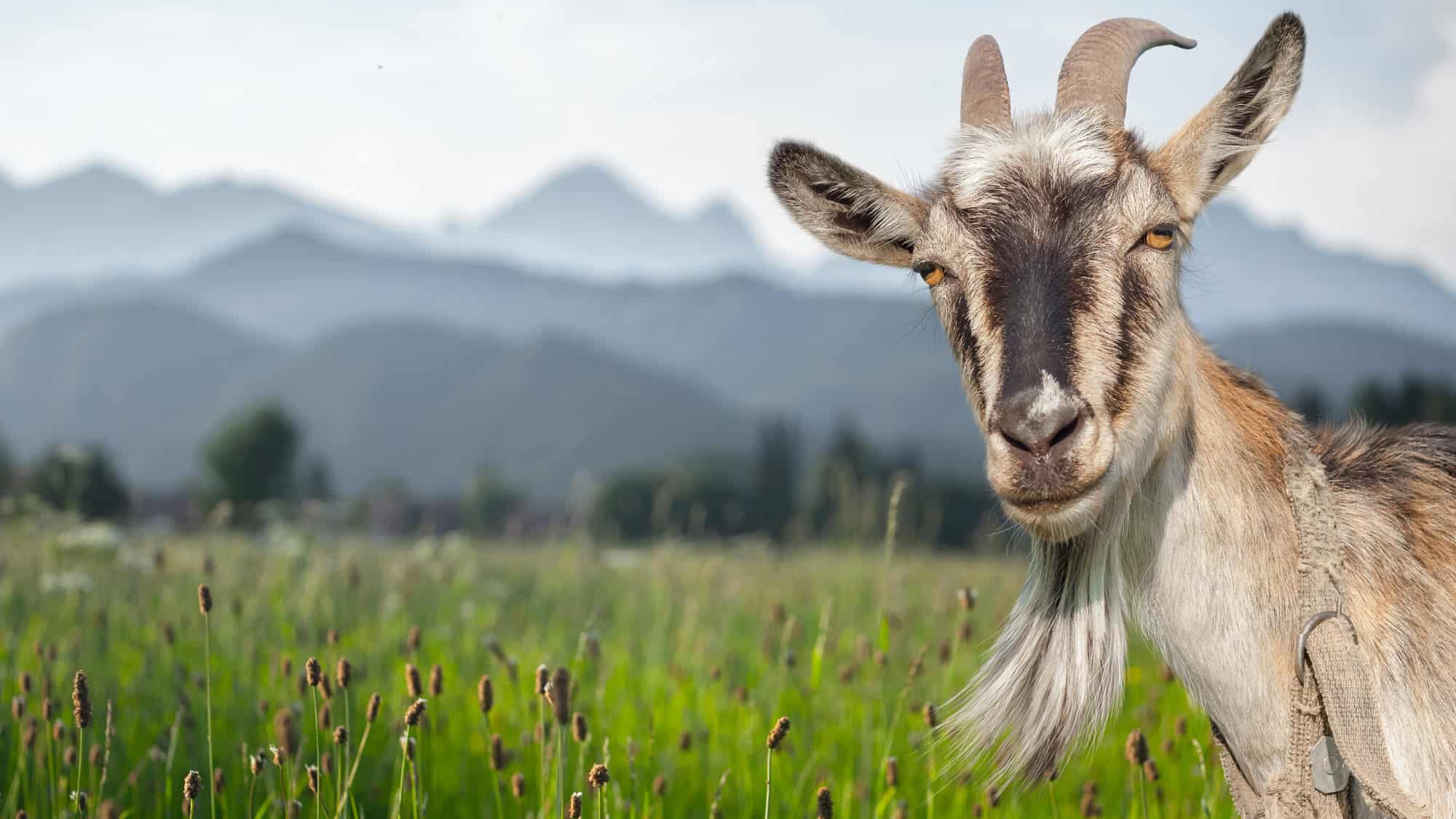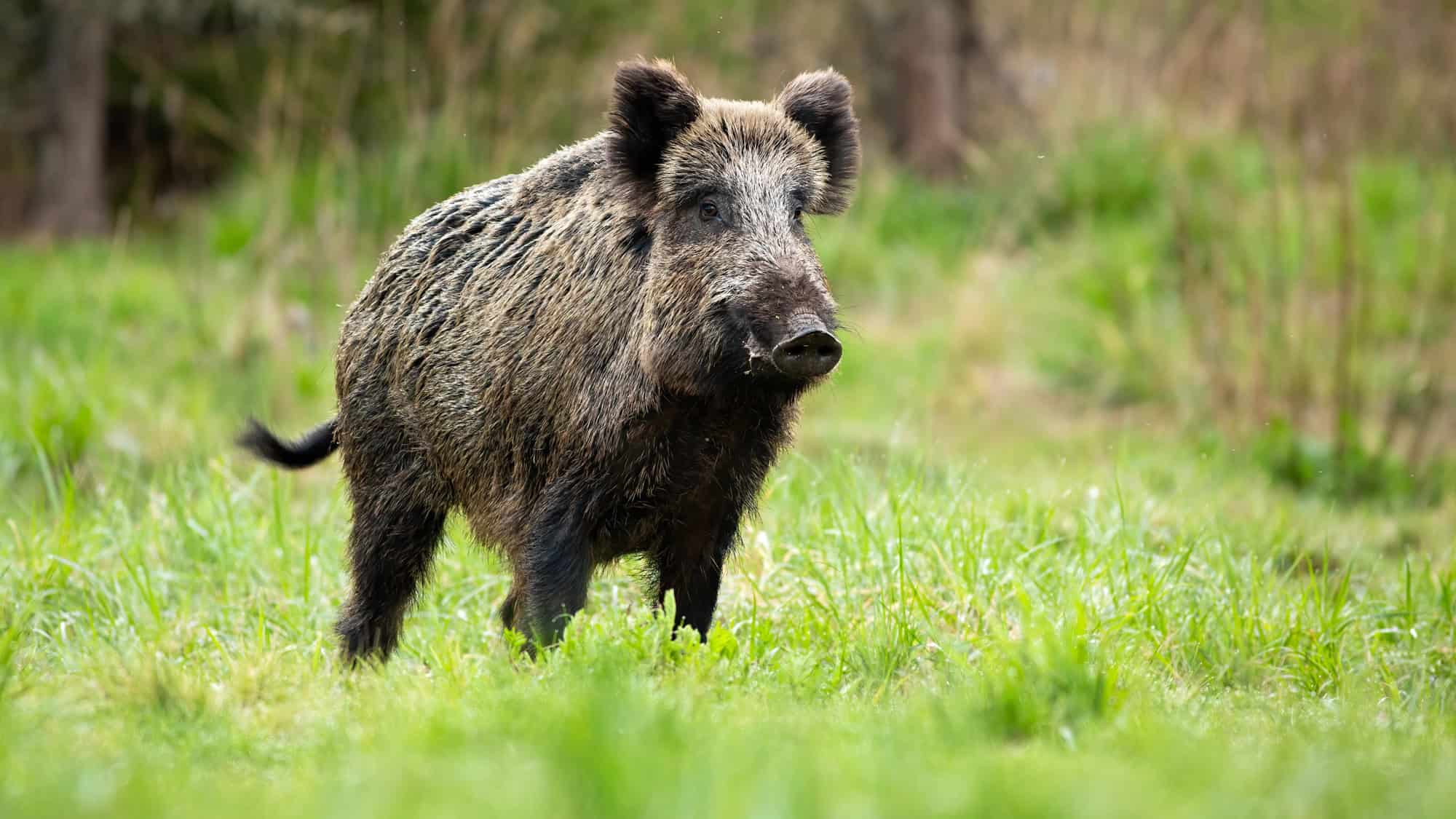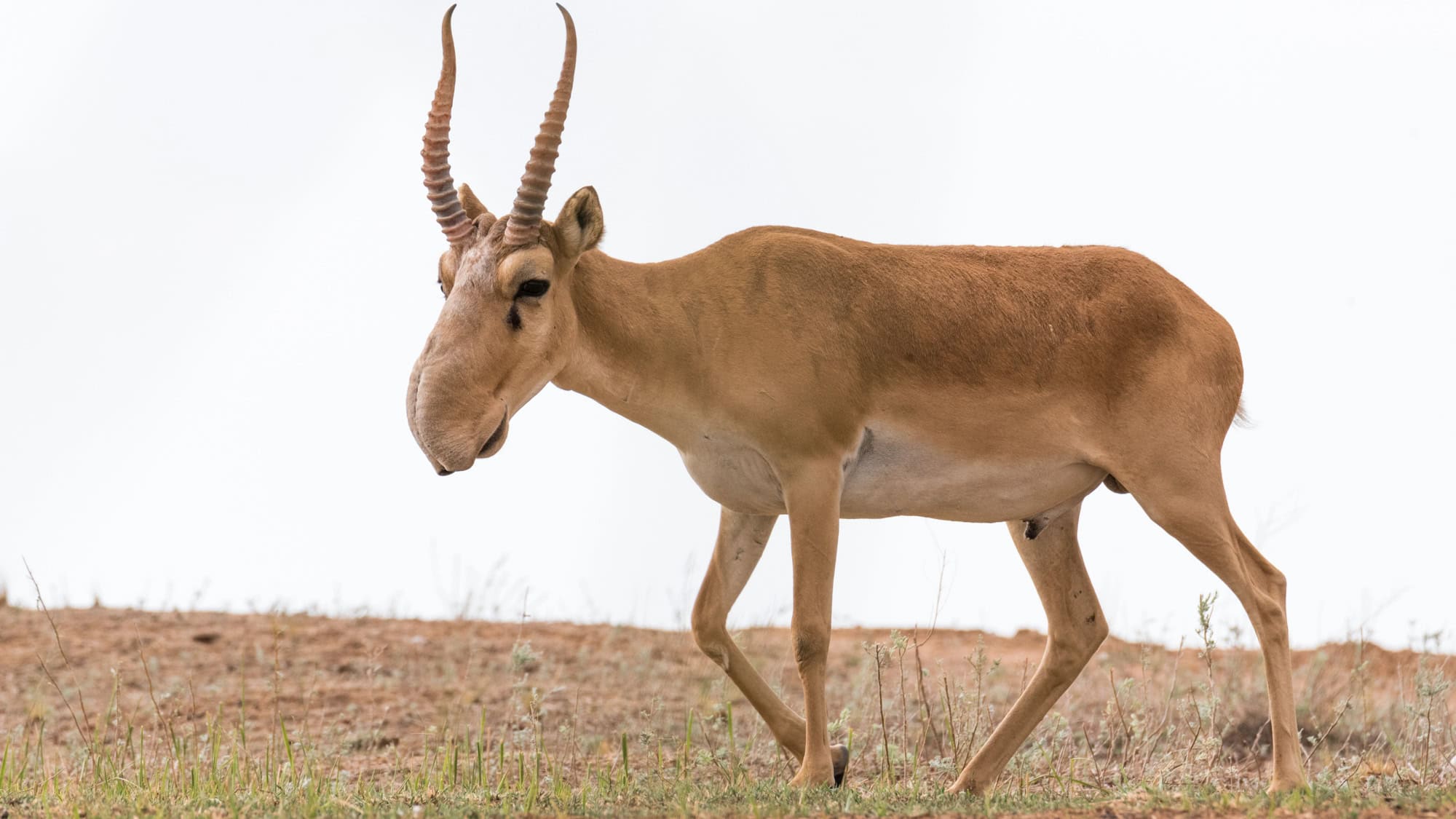Discover Parks & Wildlife contains affiliate links and is a member of the Amazon Services LLC Associates Program. If you make a purchase using one of the Amazon links, we may receive compensation at no extra cost to you. We may also use select AI tools to support our creative process, but all content is reviewed, refined, and finalized by our human team. See our disclosure policy and our AI use policy for more information.
Witches, Demons, And Death? These 15 Animals Got A Bad Rap In The Old Days
Monsters weren’t always the stuff of screams and shadows. Sometimes, they were just… animals minding their own business, while humans spun ridiculous tales about them. An owl hooting? Obviously a death omen. A black cat crossing your path? No brainer, witchcraft! And if the waves got choppy? Must be angry sea gods, probably demanding a sacrifice.
Back then, storytelling outpaced science by miles. Bat wings magically became vampire capes, wolves were basically people in bad costumes, and shark fins? Forget biology; those meant instant doom. But here’s the thing: when you dig a little deeper, the real story is way cooler.
Those glowing owl eyes? Nighttime hunting. The sneaky black cat? Pest control pro. The shark? Just tryna grab lunch, not you. The legends may be dramatic, but the truth? Oh, it’s still wild, just in a way that actually makes sense. Stay tuned to find out about the realities (and the omens).
Owls

A bird at night glides through the dark. White face like a ghostly mask. And then, THAT sound, a scream straight out of a horror flick, not some gentle hoot. Fun fact for your next trivia night: barn owls don’t hoot. Nope, they scream. A raspy, two-second screech that’ll make your spine tingle and your hedgerow neighbors think twice about late-night strolls.
Back in the day, European folklore freaked out about those cries, pegging them as omens of death. And sure, if you meet one perched on a roofline at midnight, you might feel the same way. But the truth? They’re just too-good-to-be-true nocturnal hunters making some noise to mark their turf.
Want proof? Head over to the field recordings desk and hear for yourself, barn owls screech, end of story. Eerie? Totally. Supernatural? Nah. But admit it; you’ll still get that “someone’s watching me” feeling the next time you hear one. Funny how darkness messes with your brain like that.
Bats

Blame Hollywood and a couple of melodramatic mammals, but bats have a PR problem. Out of 1,400-plus species fluttering around the globe, only three actually drink blood (yep, just three). The culprits? The common vampire bat, the hairy-legged vampire, and the white-winged vampire. And guess what? They hang out in the Americas and prefer livestock, not your neck.
The whole bat-to-vampire thing didn’t even take off until Bram Stoker’s Dracula went viral in 1897, gifting us one of pop culture’s longest-running transformations. But here’s the kicker: bats make up around 20% of all mammal species. Odds are that one is zipping around your backyard munching on mosquitoes, not planning a blood heist.
So where’d the dramatic cape and fangs idea come from? Blame shadows, some great storytelling, and, admit it, the coolest nocturnal silhouette in the animal kingdom. Scary? Not really, misunderstood, mostly. Though your local bugs probably find them terrifying.
Black Cats

Candlelight. Cobblestones. A sleek black cat glides across the street, and someone whispers, “Not today.” Thanks to medieval and early-modern Europe labeling them as witches’ “familiars,” black cats went from cozy lap companions to legal liabilities.
The whole “bad luck if they cross your path” thing? That superstition snowballed from there, picking up enough steam to last centuries. But plot twist: other cultures had entirely different takes. Japan and some Celtic traditions straight-up called them lucky, and sailors used to bring black cats aboard ships as good omens.
Historical footnote? Experts agree this superstition is centuries old, but not ancient. The only thing a black cat is truly predicting is you stumbling to turn on a light when their void-like shape disappears into the shadows. Omen or optics? Honestly, depends on the era… and whether you stub your toe.
Wolves

A full moon rises, wolves start howling, and voilà, instant folklore madness. But here’s the reality check to burst your werewolf bubble: wolves don’t care about the moon. They howl because they’re pros at long-distance communication.
Whether they’re hunting, regrouping, or just sending out a casual “Hey, where’s the pack?” their howls carry across miles of forest (like a soundwave boss). The moon myth stuck because, well, we hear them more at night and humans are absolute suckers for a spooky silhouette.
The creepy part? Blame medieval Europe, which spun wild tales of men turning into wolves under moonlight. It stuck for centuries thanks to storytellers who loved a good curse. Wildest truth? Real wolves are all about teamwork, not magic spells. It’s a pack thing, not a potion thing.
Ravens

Picture two dark shadows perched on the Allfather’s shoulders. Huginn (thought) and Muninn (memory), Odin’s ravens, take flight through the world and report back by dusk. Straight from Norse mythology, their role as war-and-prophecy messengers explains why ravens perch eerily in tales of doom and destiny.
But don’t let that stop you from learning about these incredible birds. Did you know that young ravens rival great apes in problem-solving skills? Seriously, they can ace cognition tests that most human toddlers couldn’t dream of. Case in point, a 2020 study found juvenile ravens pulling off brainy feats worthy of adult apes.
So are these birds divine couriers or nature’s sneakiest opportunists? Honestly, a little bit of both. But either way, keep an eye on your picnic… they’re calculating your sandwich situation.
Snakes

Blame ancient garden drama for the snake’s eternal bad rap. Religion painted them as the OG tricksters, which didn’t help their case. But biology? Way cooler. Out of roughly 3,000 snake species on the planet, most are nonvenomous, and even the venomous ones aren’t hunting you. Instead, they are just trying to hunt dinner.
Actual risks from snakes are hyper-regional. For instance, snakebite deaths (81,000–138,000 annually, for stats nerds) disproportionately hit rural areas in Asia and Africa, where antivenom is scarce. But in places like the USA, there are very few, if any, deaths each year.
Did you know snakes can regulate their venom and would really rather slither the heck away than waste it on your shoe? Turns out, symbolism might be dangerous in books, but in real life? It’s the stats in underserved areas that matter most.
Spiders

Ancient lore made spider webs into mystical traps for souls and gave them a creepy factor that still clings to them today. But the modern reality is more math than magic.
Scientists have described over 50,000 spider species, and the majority are harmless. Even notorious culprits like widows and recluses prefer a no-human contact policy. People still cling to myths though, like that utterly fake “swallowing eight spiders in your sleep” nonsense. Nope. Never happened.
What’s real? Their silk. A marvel of engineering, stronger than it looks and rebuilt nightly like gossamer scaffolding. Creepy or genius? Depends on if it’s building webs… or crawling near your pillow.
Toads

Witches absolutely adored toads, or at least in everyone else’s imagination, they did. And European demonology wasn’t shy about casting toads as “familiars,” a role that likely hopped onto a real biological oddity.
Many toads exude a milky toxin from chonky parotoid glands behind their eyes, and those secretions? Packed with goodies like bufotoxins and bufadienolides, which can dramatically affect the heart. No, this doesn’t make potion recipes scientific, but you can sort of see why toads (lumpy little biochemists) turned into walking apothecaries.
Even the so-called “toadstone” charms weren’t toad-related; surprise, they were fossilized fish teeth. Reality check, though: most toads are less sorcery and more pest control with a decent weather prediction system. Folklore or pharmacy, which left the bigger cultural mark? Obviously, the aesthetic. Forget the toxins. To a toad, that peaked hat and bubbling cauldron myth must be chef’s kiss.
Hyenas

Campfire baloney says a hyena can mimic your sister’s voice to lure you off the trail. Nice try, but no. Spotted hyenas don’t moonlight as ventriloquists. But what they do have is one of Africa’s wildest social setups, complete with a noise catalog that could rival a DJ’s sample pack. Whoops, groans, and yes, that infamous “laugh.”
Numbers? Some clans boast over 80 individuals, led by females because, of course, the ladies run the show. And their signature whoop isn’t just for show; it’s the ultimate long-distance communication, perfect for organizing chaos across savannah real estate.
About that laugh? National Geographic will tell you it’s not comedic. Instead, it’s the sound of social tension being broadcast. These wild creatures run a matriarchal society with rules as sharp as their teeth. And when a clan’s harmony runs on sound waves rather than silly ventriloquism, isn’t that more badass? Definitely.
Black Dogs

Lantern-lit wind, empty lanes, and a pair of glowing coals at knee height. Are you spooked yet? Welcome to Britain’s love affair with ghost-dog folklore. It’s thick with stories about the Black Shuck of East Anglia, Yorkshire’s Barghest, and those funereal churchyard “grims” that toll phantom bells before someone checks out for good.
Don’t freak out, though; not every spectral pup is out for doom. Some help travelers, which conveniently gets missed in the headline-stealing scare stories. Where’s the evidence? Eh, foggy at best. These tales cling hard to specific spots (roads, bridges, and paths you can still walk), but they’re stitched together by moody atmosphere more than facts.
The spookiest entry comes from the 1500s, when Shuck supposedly stormed a church during a thunderstorm, leaving scorch marks on doors. True or not, it probably convinced kids to get home before the sky did. Practical parenting with a side of urban legend.
Goats

You’ve seen the horns, hooves, and those rectangular pupils that could out-stare an optical illusion. Goats, though, have an image problem. And you can thank 19th-century occult artists for hijacking their brand. That Baphomet goat-meets-mysticism combo locked them into a diabolical poster role.
Science, meanwhile, is just sitting there shaking its head. Those stare-down pupils? They’re a biological box of brilliance, giving goats a near-360-degree panoramic view and helping them stay upright while hopping around mountain cliffs. That’s not evil; that’s evolutionary engineering.
How did the devil cosplay stick? Goat skulls look theatrical, rural Europe had plenty lying around, and humans love spooky art. But seriously, if a goat shows up in the dark, it wants grain, not your soul. And if it looks like it stepped out of a woodcut… well, that’s just good marketing.
Sharks

Before waterproof cameras and viral shark memes, a silhouette of a dorsal fin in shadowy water was the ultimate maritime monster of old lore. Polynesian myths, though, handed sharks a way cooler PR package. Some sharks, like Hawaii’s Kamohoaliʻi, were literal family guardians with deified status.
Power dynamics flipped depending on who was telling the story. It could be a fierce protector for some, or a ruthless punisher for others. Now? The numbers play it chill. Global fatal shark attacks tally below double digits annually. Chill stats for an apex predator, right? Sharks aren’t plotting; they’re just energy-efficient hunters using electro-sensory powers like sea ninjas.
God or demon? Myth matters, but when you break it down, sharks are simply ancient creatures rocking the ultimate survival kit. No canoe required to appreciate that kind of brilliance.
Vultures

Cloaks up, heads down, here comes nature’s janitorial squad: the vultures. Back in the day, people saw dead bodies, then vultures, and immediately jumped to “dark omens.” Meanwhile, science is over here waving a flag like, “Biohazard control, people!”
These birds have a gastric acid situation so intense it can annihilate pathogens like it’s nothing. Fun fact (or terrifying, depending on your vibe): in South Asia during the late ‘90s and early 2000s, a veterinary drug called diclofenac almost wiped out vultures entirely. Why? Kidney failure, thanks to snacking on medicated livestock carcasses.
Cue a huge mess: feral dog populations exploded, diseases became a party crasher, and even funeral rites hit major snags. Call them omens if you must, but vultures are the sanitation workers keeping the ecosystem from turning into a dumpster fire. A little respect, please.
Boars

Forests used to flaunt tusks, and boy, did they know how to use them. Legendary boars like Twrch Trwyth in the Mabinogion didn’t just eat your crops; they demolished entire regions for kicks before getting chased into the sea.
Magical omens of doom? Maybe. But even without the mythological flair, wild boars are no joke. Native to Eurasia and North Africa, these beasts are the heavyweight champs of the pig world. Males come armed with tusks that don’t stop growing and double as root-plowing tools and defense mechanisms.
At shoulder height, they can hit a solid 3 feet. So whether spotting one is a mystical sign of disaster or just a pig asserting his rights on a narrow path, one thing’s clear… you’re not winning that stare-off.
Rats

Sewer gremlins, pantry bandits, eternal scapegoats. Rats are the OG villains of the plague story, their fleas chauffeuring Yersinia pestis (the bacterium behind the Black Death). But hold up, the plot thickens. Some studies argue that human fleas and lice were major players in Europe’s pandemic drama.
Regardless, the devastation was brutal. Between 1347 and 1351, the continent likely lost around 25 million people. Yep, rats got stamped with permanent villain status after that, even though modern plague outbreaks are more about garbage piles and flea vectors than furry little critters.
The takeaway? Stop blaming whiskers and handle your trash. Oh, and maybe invest in airtight grain storage while you’re at it. Dark? Sure. Fixable? Absolutely, we’ve done it before.
Like Our Content? Follow Us on MSN (or click the Follow Button above) for more from Discover Parks & Wildlife.
21 Animals Only a Mother Could Love

Prepare to fall head over heels for a delightfully bizarre collection of critters that are so hideous, they somehow loop back around to being downright adorable.
15 Most Venomous Animals on Earth

Ever fancied a trip through nature’s own horror movie? Dive into this venomous tale that will have you clutching your anti-venom kit!
18 Longest Animal Migrations That Redefine Endurance in Nature

Check out this mind-blowing tale about the thrill-seeking creatures with epic migration routes that make your daily commute look like a Sunday stroll.






